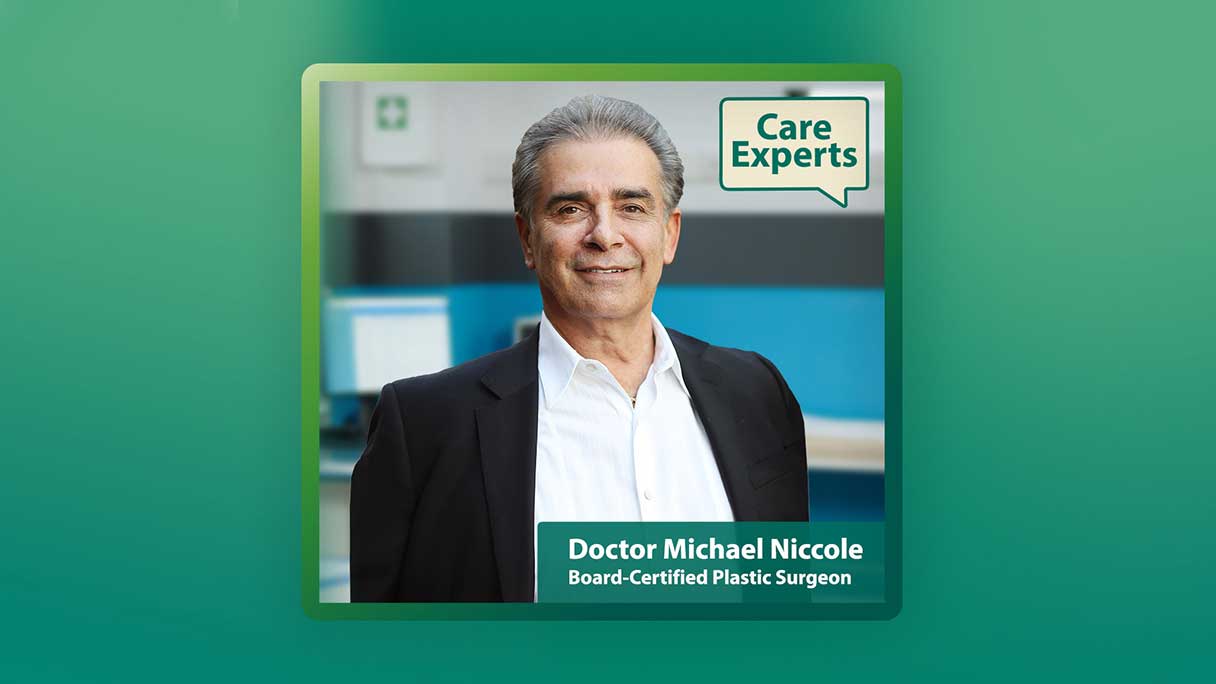If you've ever wished you could change something about your nose, you're not alone. Rhinoplasty, also known as a nose job or nose reshaping, is one of the most popular surgical cosmetic procedures in the United States every year.
Below, we'll dive into everything you need to know about nose jobs, including average costs, different types, whether insurance will cover the procedure and more.
Read Related Articles
12 Cosmetic and Health Benefits of a Nose Job
Paying for Elective Plastic Surgery: Things to Consider
What Is Rhinoplasty?
Rhinoplasty is a surgical procedure that changes your nose shape by modifying or removing bone or cartilage. While considered a cosmetic procedure and often done for aesthetic reasons, it can also be performed alongside a septoplasty, which can help improve breathing. A septoplasty is done to straighten a deviated septum when the bone and cartilage that divides your nostrils become crooked.
Surgical vs. non-surgical nose job
A non-surgical nose job, sometimes called liquid rhinoplasty, is a quick in-office cosmetic treatment that involves injecting filler into the nose. Liquid rhinoplasty is a much quicker procedure than a rhinoplasty surgery. Fillers can be used to minimize the appearance of unwanted facial features (e.g., a bump on the nose) or soften angles, though these results are only temporary and can last between eight to 16 months.
Non-surgical nose jobs don't require time off for recovery, and side effects are relatively minor, like bruising, swelling and tenderness to the injected area. However, because the results are temporary, you might need to repeat injections every one to three years, which can add up over time. Traditional rhinoplasty, in contrast, is permanent.
Different Types of Nose Jobs
There are various types of nose jobs to address different concerns. Sometimes, a nose job is performed to restore the nose after an injury or because of a congenital defect. Nose jobs are also used to correct aesthetic concerns, such as reducing the length of the nose or the width of the nostrils, or changing the slope or angle of the nose.
Before digging into costs, see below for an overview of the 12 most common types of nose jobs.
| Type of nose job | Description |
|---|---|
| Alarplasty | Also known as alar base reduction, this procedure is used to reduce the appearance of flared or open nostrils by reducing the alar, the fleshy tissue that connects your nostrils to your face. |
| Closed rhinoplasty | Also called scarless rhinoplasty, this procedure is performed via incisions made inside the nose. |
| Ethnic nose job | This procedure encompasses any type of rhinoplasty that works with skin color, physical features and characteristics common among certain ethnicities. |
| Non-surgical nose job | Also known as a filler nose job or 15-minute nose job, this procedure uses fillers to temporarily change the shape of the nose by smoothing out bumps or softening angles. |
| Nose augmentation | This procedure involves rearranging the nose (rather than removing from or adding to it) to make subtle changes to the angles and definition in order to balance the nose's proportions. |
| Open rhinoplasty | This is the most common type of nose job and is performed via incisions made on the outside of the nose on the columella, the strip of tissue between the nostrils. |
| Post-traumatic rhinoplasty | This procedure is performed following an injury to the nose to repair damage or even reconstruct parts of the nose. |
| Reconstructive rhinoplasty | This procedure is used to rebuild the nose and can entail anything from using skin grafts following skin cancer surgery to reconstructing the entire nose after an injury. |
| Reduction | This is the name for any rhinoplasty procedure that involves removing cartilage or bone to reduce the size of the nose. |
| Secondary or revision rhinoplasty | This procedure is performed on a person who has already had one or more nose jobs and is looking for improvement. |
| Septoplasty | This procedure repairs a deviated septum. |
| Tip-plasty | Also known as tip refinement rhinoplasty, this is an open procedure used to reshape only the tip of the nose, to raise a drooping tip or narrow a bulbous nose. |
How Much Is a Nose Job?
The national average cost* for a nose job can range between $500 and $17,500, depending on the type of nose job and other factors.1 Costs will vary based on the extent of surgery, physician fees, anesthesia and surgical center or outpatient costs.
Surgeons' fees vary based on their experience, geographic location and the type of surgery, as some types of rhinoplasty are more complex than others.
Calculate the cost of rhinoplasty surgery near you

Explore procedure costs in your area
Rhinoplasty surgery cost by type
Here's a look at just how widely the average costs* can vary — and how high the price can get — for different types of rhinoplasty procedures:1
| Type of nose job | Average cost |
|---|---|
| Alarplasty | $2,925 |
| Closed rhinoplasty | $7,350 |
| Ethnic nose job | $7,868 |
| Non-surgical nose job | $1,456 |
| Open rhinoplasty | $9,153 |
| Revision rhinoplasty | $11,533 |
| Septoplasty | $8,328 |
| Tip-plasty | $8,212 |
Average cost of rhinoplasty by state/district
Here’s the average cost* of rhinoplasty for all 50 states and the District of Columbia:1
| State/District | Average cost |
|---|---|
| Alabama | $10,250 |
| Alaska | $11,809 |
| Arizona | $11,307 |
| Arkansas | $8,880 |
| California | $9,498 |
| Colorado | $9,334 |
| Connecticut | $10,820 |
| Delaware | $12,024 |
| District of Columbia | $7,951 |
| Florida | $9,569 |
| Georgia | $10,281 |
| Hawaii | $6,754 |
| Idaho | $7,635 |
| Illinois | $9,431 |
| Indiana | $10,186 |
| Iowa | $9,313 |
| Kansas | $8,112 |
| Kentucky | $10,731 |
| Louisiana | $10,855 |
| Maine | $10,310 |
| Maryland | $7,817 |
| Massachusetts | $8,006 |
| Michigan | $8,189 |
| Minnesota | $8,752 |
| Mississippi | $6,853 |
| Missouri | $8,728 |
| Montana | $9,259 |
| Nebraska | $8,012 |
| Nevada | $7,838 |
| New Hampshire | $8,528 |
| New Jersey | $9,376 |
| New Mexico | $10,976 |
| New York | $8,025 |
| North Carolina | $7,842 |
| North Dakota | $8,699 |
| Ohio | $9,039 |
| Oklahoma | $8,623 |
| Oregon | $9,478 |
| Pennsylvania | $9,366 |
| Rhode Island | $9,055 |
| South Carolina | $12,092 |
| South Dakota | $8,257 |
| Tennessee | $8,868 |
| Texas | $8,549 |
| Utah | $8,065 |
| Vermont | $9,469 |
| Virginia | $9,756 |
| Washington | $8,729 |
| West Virginia | $9,020 |
| Wisconsin | $8,328 |
| Wyoming | $7,823 |
Other fees that may be added to the cost of rhinoplasty and other types of plastic surgery include:
- Related appointments, such as consultation and postsurgery follow-up
- Medical tests, such as X-rays and blood work
- Pre- and postsurgery prescription medications
- Postsurgery garments and dressings
Liquid rhinoplasty cost
Because non-surgical or liquid nose jobs don't require anesthesia and are quicker than a rhinoplasty surgery, they can be far less expensive, averaging about $1,456. However, prices can be significantly higher — as high as $5,500 — depending on the amount of filler needed, the brand of filler, the doctor's experience and the location.1
Here's the average cost* of different injectable fillers that are used in liquid nose jobs:1
| Procedure | Average cost |
|---|---|
| Calcium hydroxylapatite fillers (Radiesse®) | $693 |
| Hyaluronic acid fillers (Juvéderm®) | $707 |
| Platelet-rich plasma (PRP) | $780 |
Does Health Insurance Cover Nose Jobs?
Rhinoplasty isn't typically covered by health insurance unless it is correcting a functional problem or a defect caused by disease or facial injury. In those cases, a portion of the surgery may be covered, and the amount of insurance benefits that will contribute to the cost of the plastic surgery is based on the patient's insurance plan.
If the rhinoplasty procedure is not deemed medically necessary, it is not covered by medical insurance benefits and is not eligible for health savings account (HSA) reimbursement. Even if a portion of the nose job is covered by health insurance, patients may still have to pay some costs out-of-pocket, such as a copay, coinsurance or deductible.
Non-surgical nose jobs are not usually covered by insurance as they are considered cosmetic procedures.
Nose Job Recovery: What to Expect
What you should expect from rhinoplasty recovery depends on the type of procedure you had.
Recovering from rhinoplasty surgery
After surgery, your nose may be supported with a splint, gauze packing and bandages to protect your nose while you heal. You will likely have some bloody discharge from your nose for a few days. The packing, if used at all, is usually removed several days after surgery, followed by the splints, which are removed after seven to 10 days.
Stitches are usually removed after seven days. Your swelling should improve significantly after two weeks and even more in the following six weeks. Six weeks after surgery, you can return to your usual activities. Due to very subtle swelling, the final result could take around a year to see, though the greatest result will be seen shortly after surgery.
Recovering from liquid rhinoplasty
You may experience some pain, redness and swelling where the filler was injected. Symptoms should subside within an hour or two, and by then, you'll begin to see your results. Unless your doctor advises otherwise, most patients can return to their regular activities the next day.
Nose job recovery tips
Here are some things you can do to help recover from a nose job procedure:
- Follow your doctor's recovery care instructions.
- Take medications as prescribed.
- Keep your head elevated and avoid strenuous activities to keep swelling down.
- If your doctor allows it, you can use an ice pack or frozen peas to relieve swelling. However, do not directly apply the pack to your nose.
- Eat a healthy diet and drink plenty of water to help maintain optimal health while you heal.
Financing a Nose Job With the CareCredit Credit Card
Ready to revitalize your appearance and boost your confidence? The CareCredit credit card makes it easy to pay for a nose job and related expenses not covered by health insurance.** Use our Acceptance Locator to find a doctor or cosmetic surgeon near you that accepts CareCredit so you can stop dreaming and start living your best life. Continue your wellness journey by downloading the CareCredit Mobile App to manage your CareCredit account, find a provider on the go and easily access the Well U blog for more great articles, podcasts and videos.
In addition to cosmetic procedures, you can also use your CareCredit credit card for dentistry, pet care, vision, hearing, health systems, dermatology, pharmacy purchases, spa treatments and so much more within the CareCredit network. How will you invest in your health and wellness next?
Expert Reviewer
Dr. Michael Niccole, M.D., F.A.C.S.
Dr. Michael Niccole is the medical director of CosmetiCare Plastic Surgery Center & MedSpa in Newport Beach, California, which he co-founded in 1982. He specializes in cosmetic surgery of the face, breast, nose and body and was voted OC Weekly’s Best Cosmetic Surgeon multiple times.
Author Bio
Kristin Driver is a Digital Writer with CareCredit. She specializes in writing about health care, finances and pet care. Her work has been published by Cedars-Sinai, UCLA Health, Stanford Health Care, Risk & Insurance, Modern Health Care, Risk Insider, CIO Review and more.








